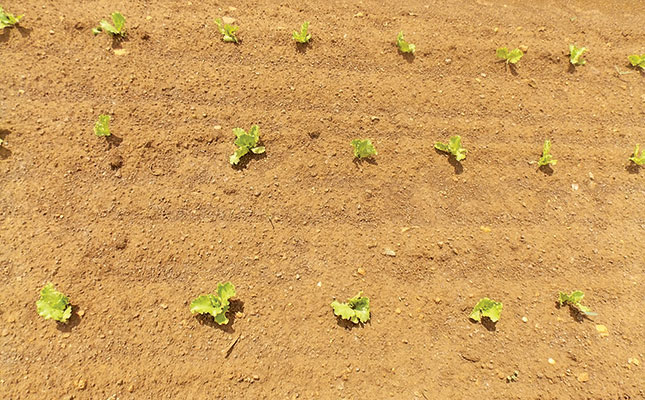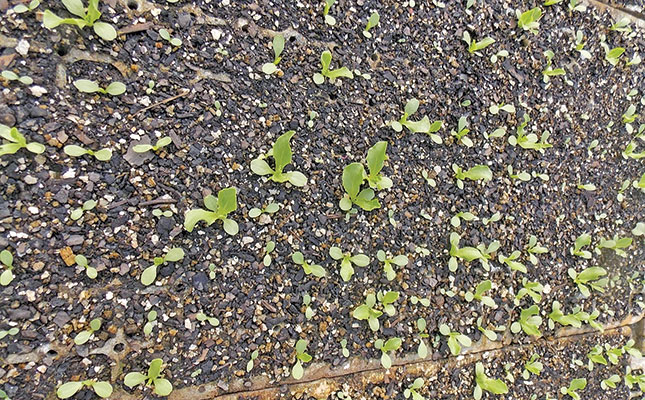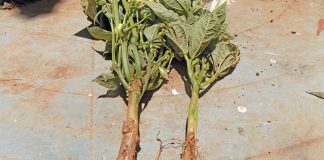
I often come across farmers who plant the seedlings into hot, dry soil, saying that irrigation follows close behind the planting.
These farmers reason that the healthy plant soon generates new roots. This is true, but the damaged roots could serve as an entry point for root diseases. These may only manifest much later and not be associated with planting in hot, dry soil.
This said, you can get away with drier conditions by planting early in the morning when the soil is still cool.
If, on the other hand, the soil is too wet, compaction and structural damage may occur during the planting. So when planting manually, avoid standing in the row; rather stand on the paths between the rows or beds.
Although the soil is moist, the sooner that water follows planting, the better. The plant does not require a great deal; at this stage the roots are near the surface. Too much water may also lead to leaching and lower the oxygen content of the soil.
Roots grow far more rapidly when oxygen is in abundance. Small clods will help here, as well as reduce compaction after heavy rain.
Before or just after planting, spray for cutworm. Neglect this step and you will pay dearly sooner or later.
The importance of nitrogen
It is also crucial to provide the first LAN application at an early stage. A young plant has a limited root system, and applying irrigation after planting and until your lettuce is properly established may leach much of the available nitrogen to deeper layers beyond the root system.
There may well be sufficient nitrogen, but it’s not worth taking the chance. Bearing this is mind, apply the first LAN about a week after planting. This will promote rapid growth and a large frame, enabling the plant to produce a larger head.
In addition, the faster the soil surface is covered by growth, the less the competition from weeds.
Subsequent LAN application will depend on the soil type, soil health and organic content.
If manure has been used, the initial application of LAN may well be sufficient to ensure a good crop. This is where experience and the farmer’s ‘feel’ for the crop comes in. However, a second application is usually necessary. After heavy rain, assume that there has been a loss of nitrogen and apply LAN before symptoms appear.
A darker colour
LAN can be applied in various ways. Some farmers use an applicator, while others broadcast it. Some place a little near the plant by hand at a ratio of one handful to 10 plants. Others use a fertiliser bag rolled halfway down with a pipe fitted to a bottom corner. The fertiliser runs through this pipe near each row and is applied at walking pace.
When broadcasting LAN, do so when the leaves are dry, and irrigate before nightfall. LAN (or any nitrogenous fertiliser) will burn moist leaves. If you’re aiming for dark-coloured lettuce, apply a foliar spray of urea at 4kg/ ha to 5kg/ha when the crop is ready for harvest. The leaves will soon darken.
Avoid using multi- nutrient mixtures as a foliar feed. These usually do more harm than good and can lead to the lettuce becoming stressed. As we’ve noted in an earlier article, this is a fast-growing crop which is ready 50 to 60 days after transplanting. This leaves no room for setbacks or errors.
However, if you do things properly, lettuce is a very easy crop to grow.













